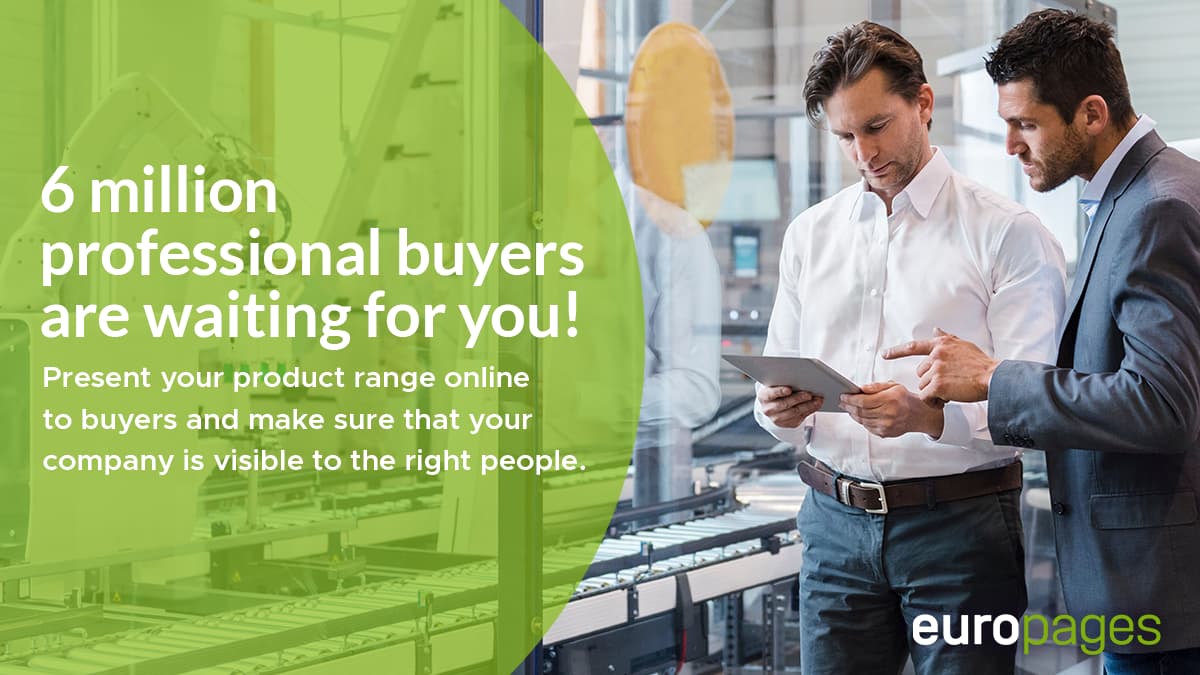Mrs. Yönter, europages is turning 40, its sister platform wlw a whopping 90 years old. With over a century’s worth of combined history, do you still feel connected to its beginnings?
Absolutely. There is a very simple idea at the heart of everything we do: To bring purchasers and suppliers together. And while this mission has grown in ambition and scope, it has always been the same at its core – from our early beginnings as a publisher of printed company directories to the state-of-the-art online B2B platforms that we offer our customers and users today.
Present your company on our platform!
The advantages:
- International audience and visibility
- Set-up in 5 minutes
- Numerous options and services through individual content
Speaking of technical evolutions, what were some of the milestones along the way?
In Germany it started as early as 1932, when we first published our company directory “Wer liefert was?” (now known as wlw). Those catalogues soon became a mainstay in German-speaking purchasers’ everyday work. From there it quickly developed. After its foundation in ’82, europages – then named Eurédit – followed a very similar trajectory, but on a European scale. Even back then, the directory was published in six languages. To make supplier information accessible to purchasers in the best way possible, europages was always at the forefront of innovation, continuously adapting to the technologies available at the time: In the early days, we moved from print to microfiche – not many people even remember this medium today. In the late 80s, europages was first published on CD-ROM, allowing for yet another boost in efficiency when sourcing for new suppliers. In 1995, both europages and wlw went online – three years before Google, I might add [laughs]. This step really paved the way for the future and allowed us to go global: Today, europages is available in 26 languages and is used by procurement professionals from over 200 countries.

What does europages owe its longevity to?
We have always adapted to changing requirements – and we continue to do so. The purchaser’s job has become a lot more demanding in recent years – especially with the onset of the pandemic or more recently the Ukraine war. Faced with crumbling supply chains, raw material shortages etc., they need to be a lot more agile and precise in finding the right supplier. europages helps them to meet these challenges.
Our ongoing investment in our platform is key to addressing the needs of our target groups. Recent technological developments include the Message Centre, which centralises all communication between purchasers and suppliers on the platform and thus simplifies the entire process of issuing and managing requests. Mobile is a huge factor as well. More and more purchasers are doing their sourcing “on the go” and our product needs to account for that. The same goes for suppliers: The "Visable App" enables suppliers to manage their company profiles on europages and wlw as well as purchaser enquiries on their mobile phones. And then there are new features such as the "Visitor Profiler". As the name suggests, it allows suppliers to see exactly who has visited their company profile. In the end, all of this reduces barriers and increases precision in establishing the right business contacts – for both the purchaser and the supplier.
Looking ahead: What’s next for europages?
As Visable, the umbrella brand behind both europages and wlw, we have made significant progress on our way to becoming a European B2B champion in the past years. We have developed into a growing, international company with close to 500 employees in France and Germany and close to 100 in France only. Up to 4 million purchasers use europages and wlw per month to get in touch with more than 3 million companies listed on our platforms. In the coming years, we will build on these achievements by developing new markets and of course by further investing in our technologies. For instance, we are currently looking into ways to unify the experience on both our platforms, which will in turn allow us to maximise our efficiency in developing future solutions for our users.

